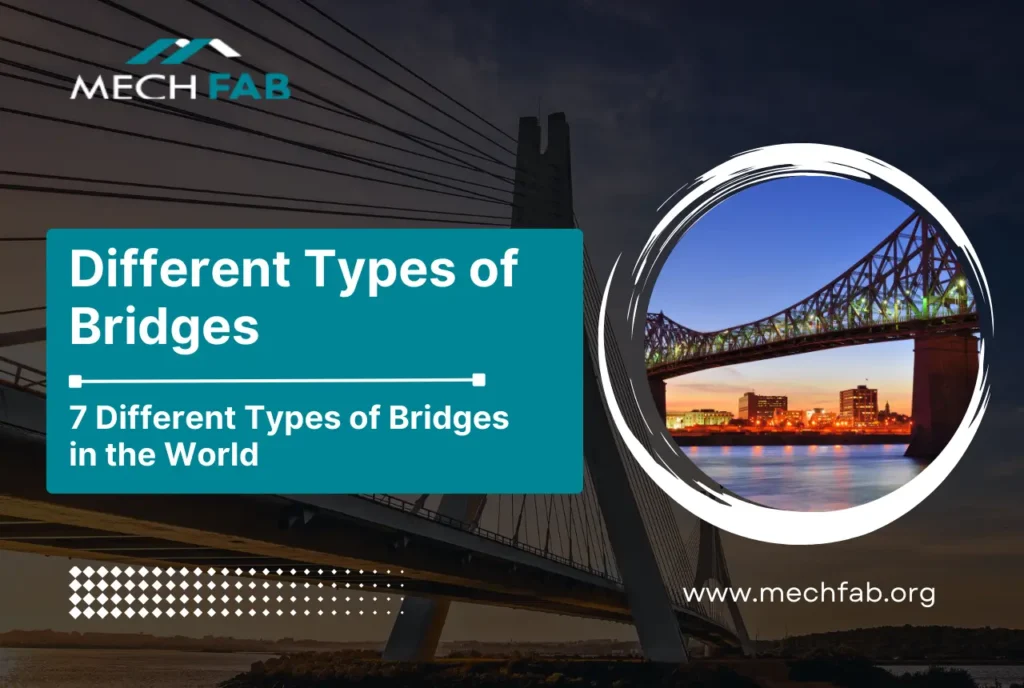Many different types of bridges are constructed with other methods to suit the purpose and wants of the area of construction, they tend to connect different places and are engineering marvels as Bridges are majestic structures that connect lands and hearts, and have been integral to human civilization for millennia.
From humble footbridges to colossal spans defying gravity, these engineering marvels come in diverse forms, each with its unique strengths and characteristics. This article delves into seven primary types of bridges, exploring their defining features and the engineering principles behind them.
Unique Features of These 7 Types of Bridges Will Fascinate You.
1. Arch Bridge
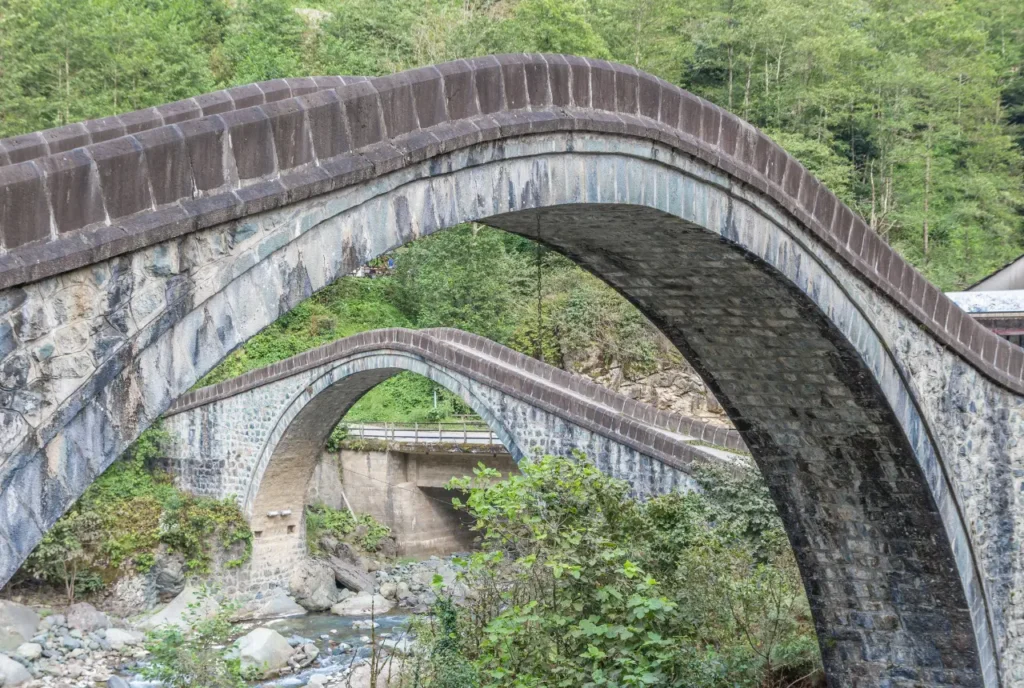
An arch bridge is a construction that uses a curving arch to sustain its own weight and any additional stresses. These bridges have existed since antiquity, with Roman engineers known for their expertise in arch construction.
An arch bridge’s strength is derived from its ability to convert downward stresses into horizontal outward thrusts, which are then counteracted by the bridge’s abutments. This technique, known as compression, makes arch bridges extremely strong and capable of spanning long distances. Modern arch bridges, which were traditionally made of stone, brick, or concrete, may now include steel or reinforced concrete.
Arch bridges are praised for their graceful curves and large spans. However, their construction is frequently complicated and time-consuming, necessitating strong foundations and abutments to withstand the outward thrust.
Despite these problems, iconic examples of arch bridges include the Rialto Bridge in Venice, Italy, and the New River Gorge Bridge in West Virginia, USA, which demonstrate their enduring beauty and architectural prowess.
2. Beam Bridge
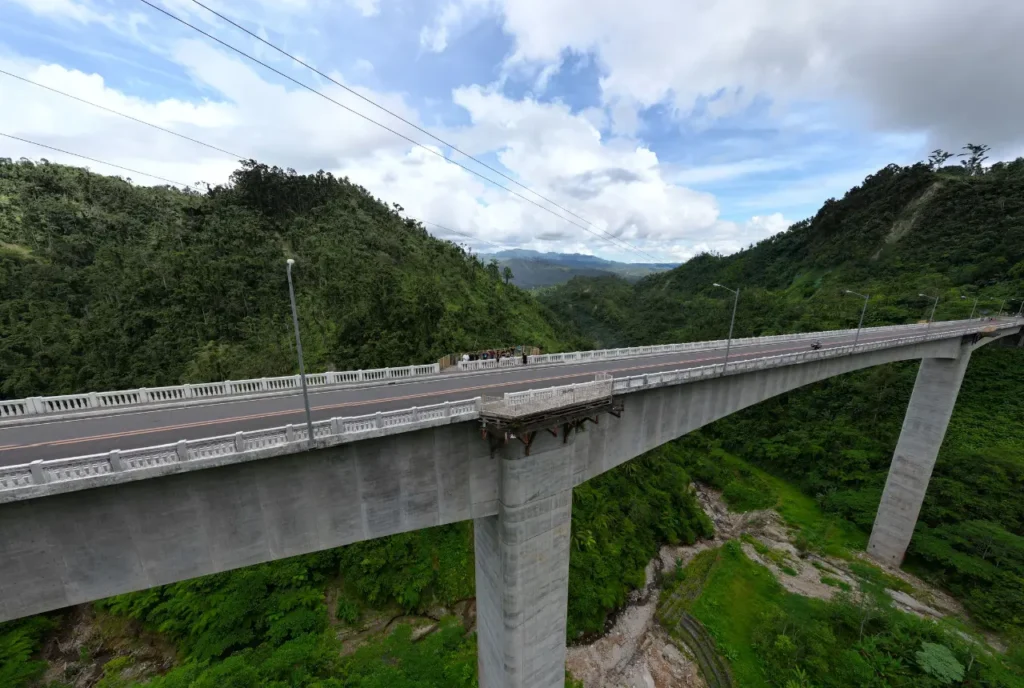
A beam bridge is one of the most fundamental bridge forms, consisting of a horizontal beam supported at both ends by piers or abutments.
Its simplicity makes it a low-cost and quick-to-build choice for spanning small distances.
Beam bridges, which are often composed of steel or concrete, rely on their own strength to withstand traffic loads. While economical over shorter distances, their span length is limited by beam deflection under heavy loads.
Although beam bridges lack the visual appeal of other bridge types, they are practical and utilitarian, making them a popular choice for a wide range of applications.
Notable examples of beam bridges include the Lake Pontchartrain Causeway in the United States, known for its astounding length, and the Donghai Bridge in China, which exemplifies the modern progression of beam bridge construction.
3. Cantilever Bridge
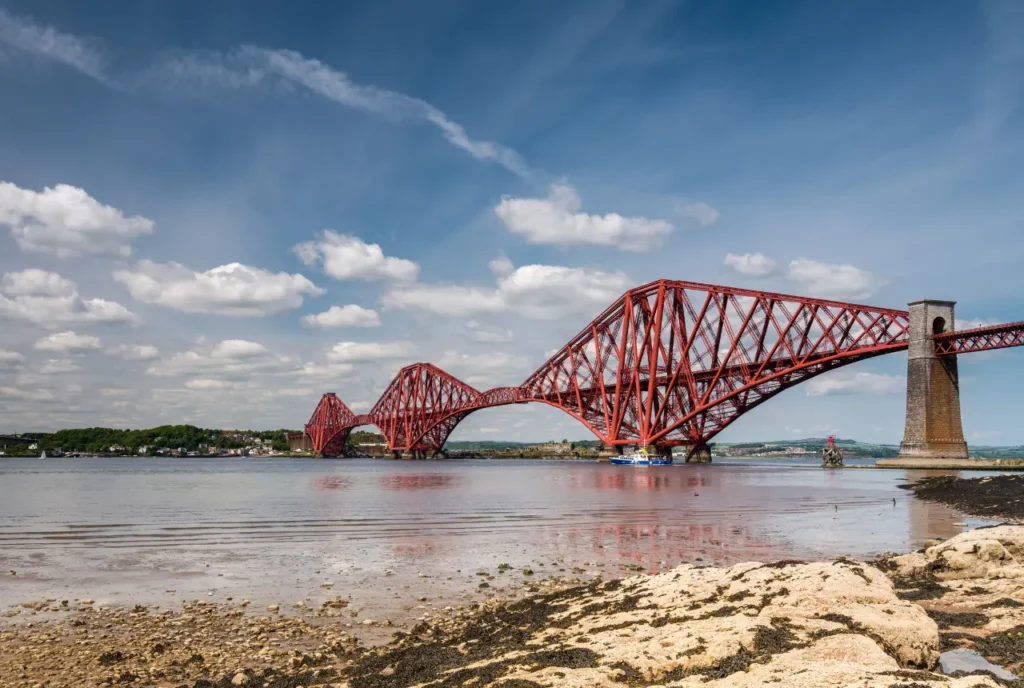
A cantilever bridge is a marvel of engineering that defies conventional support systems.
It consists of projecting structures known as cantilevers, anchored at one end and extending horizontally into space. These cantilevers, often made of steel or reinforced concrete, form the bridge’s main spans.
Cantilever bridges are particularly useful for bridging longer distances as they can be constructed without the need for temporary support structures, or falsework, in the water. This makes them suitable for challenging terrains and water bodies.
However, their complex design and construction process, along with the potential for high maintenance costs, make them more expensive than simpler bridge types.
Iconic examples of cantilever bridges include the Forth Bridge in Scotland, a UNESCO World Heritage Site, and the Quebec Bridge in Canada, which overcame significant engineering challenges during its construction.
4. Suspension Bridge
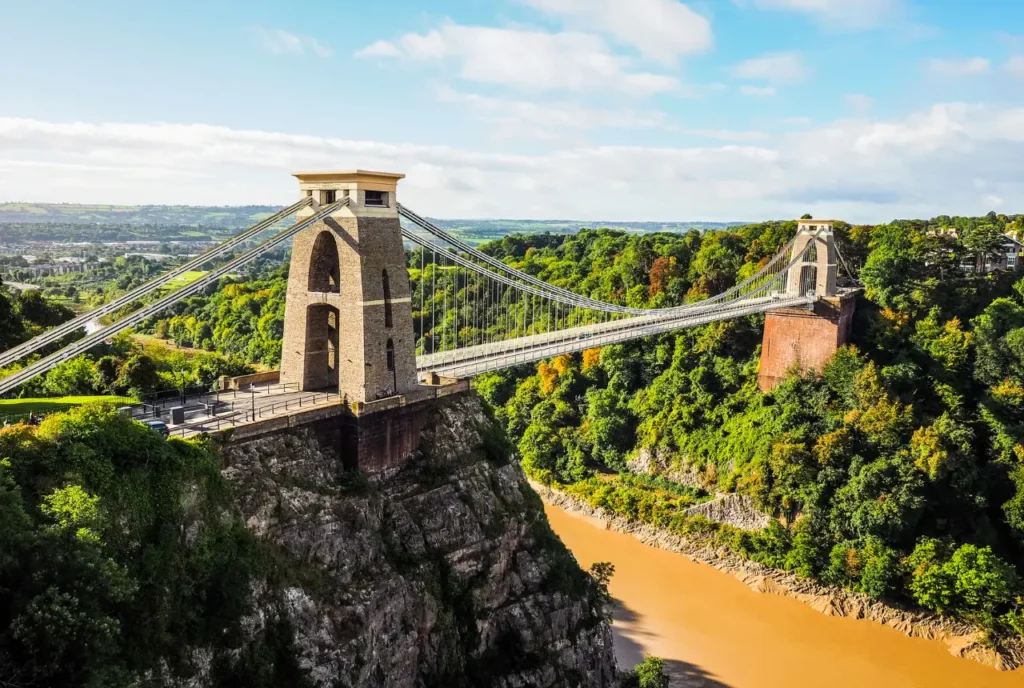
A suspension bridge is an elegant and imposing construction that uses tension to span long distances. Its characteristic design includes primary cables hung between tall towers, with vertical suspender cables linking them to the bridge deck.
Suspension bridges are unique in their capacity to span extremely long distances, making them suitable for traversing deep lakes, valleys, and other difficult terrains. Their flexibility also enables them to withstand seismic activity more effectively than many other bridge styles. However, their design is sophisticated and expensive, and they require regular maintenance to assure their longevity.
The Golden Gate Bridge in San Francisco, USA, is possibly the most well-known suspension bridge, representing both engineering brilliance and iconic beauty. The Akashi Kaikyō Bridge in Japan is the world’s longest suspension bridge.
5. Cable-Stayed Bridge
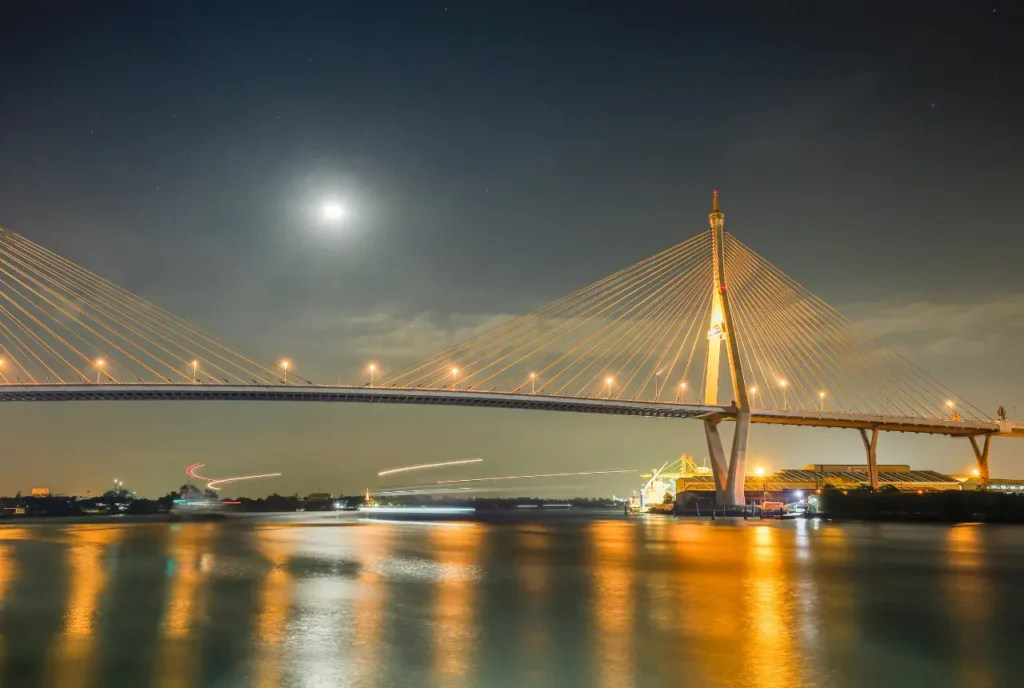
A cable-stayed bridge is a unique structure in which cables connect the bridge deck directly to towers or pylons.
Unlike suspension bridges, which rely on major cables supported by anchorages, cable-stayed bridges disperse the load via individual cables.
This design provides various advantages. Cable-stayed bridges typically use less material than suspension bridges, making them more cost-effective for medium to long spans. Their sleek and futuristic design has increased their popularity in contemporary architecture. However, their development necessitates accurate engineering calculations and meticulous planning.
The Millau Viaduct in France, known for its towering height, and the Russky Bridge in Russia, which spans a large distance across the East Bosphorus Strait, are great examples of cable-stayed bridges’ architectural and engineering capabilities.
6. Tied-Arch Bridge
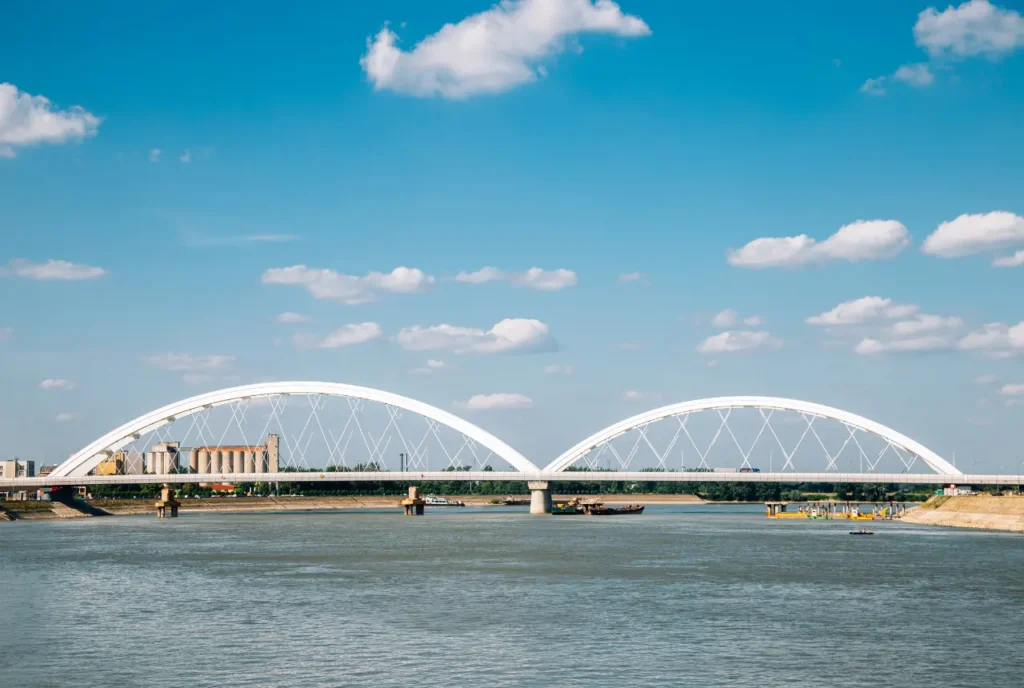
A tied-arch bridge is an intriguing combination of arch and suspension bridge elements.
As the name suggests, it features an arch positioned above the deck, with the deck itself suspended from the arch using vertical hangers.
This hybrid design offers several advantages. By incorporating the compressive strength of an arch and the tensile strength of the suspension elements, tied-arch bridges can efficiently utilize materials. They are suitable for spanning moderate distances and can be aesthetically pleasing. However, their construction process is complex due to the intricate interplay of forces, and they require strong anchorages to resist the horizontal thrust of the arch.
The Godavari Arch Bridge in India and the Lupu Bridge in China are notable examples of tied-arch bridges, showcasing the potential of this hybrid design in modern bridge engineering.
7. Truss Bridge
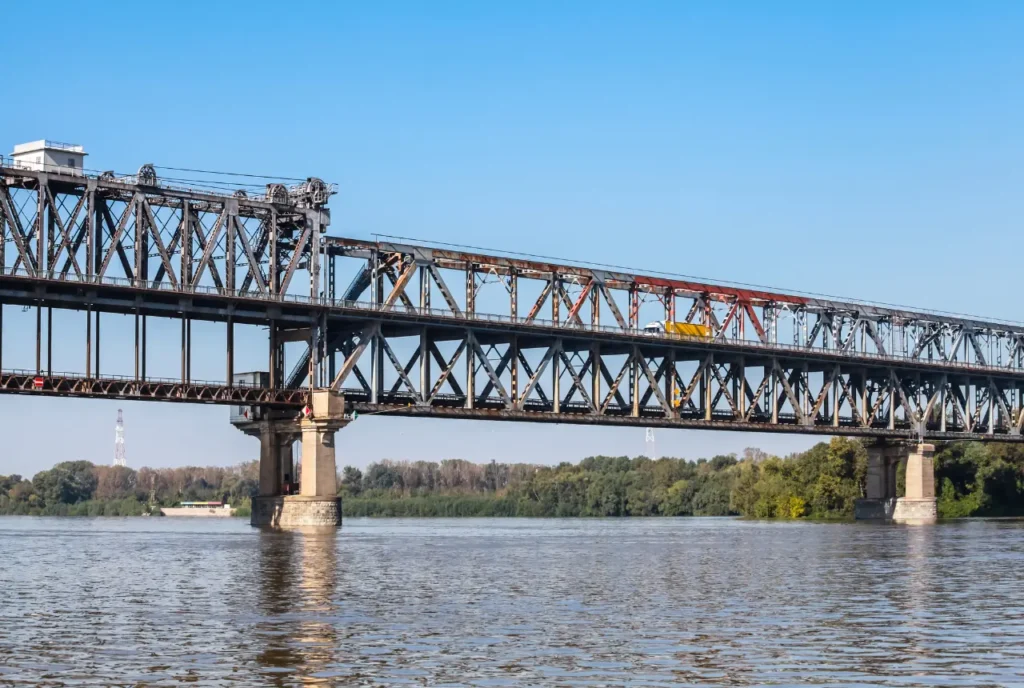
A truss bridge is a type of bridge characterized by its framework of interconnected elements that form triangular units. This design, often likened to a lattice or grid, allows truss bridges to distribute loads efficiently, making them remarkably strong and durable structures. Their ability to span significant distances with a relatively economical use of materials has made truss bridges a popular choice for short to medium spans.
Historically, truss bridges have played a vital role in infrastructure development. Their strength and efficiency enabled the construction of bridges over rivers, valleys, and other obstacles, facilitating transportation and trade. Notable examples of truss bridges include the Ikitsuki Bridge in Japan, known for its innovative design, and the Francis Scott Key Bridge in the United States, a prominent landmark in the Washington D.C. area.
While truss bridges offer numerous advantages, they also have certain drawbacks. Their open lattice structure can sometimes be considered visually intrusive, and they require regular maintenance to ensure their structural integrity. Despite these considerations, truss bridges continue to be an important and enduring component of modern infrastructure.
Winding Up
Understanding the various types of bridges is crucial for appreciating the ingenuity and complexity of modern infrastructure. From the ancient arches of Roman aqueducts to the soaring suspension bridges of today, bridges have played an indispensable role in connecting communities, facilitating trade, and shaping the course of history.
These structures are not merely utilitarian; they are testaments to human ingenuity and engineering prowess. By recognizing the different bridge types and the principles behind their construction, we can gain a deeper appreciation for the intricate interplay of science, art, and necessity that goes into creating these vital links in our world.
Let us marvel at the engineering marvels that span our rivers, valleys, and waterways, and continue to support the development of innovative bridge designs that will serve future generations.

